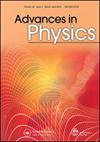湍流中重粒子空间模式的统计模型
IF 35
1区 物理与天体物理
Q1 PHYSICS, CONDENSED MATTER
引用次数: 118
摘要
悬浮在湍流中的重粒子动力学对于天体物理学、大气物理学、海洋学和技术领域的许多问题都具有重要的基础意义。实验室实验和数值模拟表明,重粒子以复杂的方式对携带流体的湍流波动作出反应:即使流体不可压缩,非相互作用的粒子也可能聚集在一起形成空间图案,附近粒子的相对速度可能会剧烈波动。这两种现象都敏感地依赖于系统的参数。这种参数依赖性很难从第一性原理建模,因为湍流起着至关重要的作用。实验室实验也非常困难,正是因为它们必须涉及动荡的环境。但近年来,人们已经清楚地认识到,湍流中重粒子动力学的重要方面可以用统计模型来理解,在统计模型中,湍流起伏用高斯随机函数和适当的相关函数来近似。在这篇综述中,我们总结了这种统计模型计算如何导致对湍流中决定重粒子动力学的因素的详细理解。我们集中研究湍流中重粒子的空间聚类。这是一个重要的问题,因为空间聚类影响粒子之间的碰撞率,从而影响系统的长期命运。本文章由计算机程序翻译,如有差异,请以英文原文为准。
Statistical models for spatial patterns of heavy particles in turbulence
The dynamics of heavy particles suspended in turbulent flows is of fundamental importance for a wide range of questions in astrophysics, atmospheric physics, oceanography, and technology. Laboratory experiments and numerical simulations have demonstrated that heavy particles respond in intricate ways to turbulent fluctuations of the carrying fluid: non-interacting particles may cluster together and form spatial patterns even though the fluid is incompressible, and the relative speeds of nearby particles can fluctuate strongly. Both phenomena depend sensitively on the parameters of the system. This parameter dependence is difficult to model from first principles since turbulence plays an essential role. Laboratory experiments are also very difficult, precisely since they must refer to a turbulent environment. But in recent years it has become clear that important aspects of the dynamics of heavy particles in turbulence can be understood in terms of statistical models where the turbulent fluctuations are approximated by Gaussian random functions with appropriate correlation functions. In this review, we summarise how such statistical-model calculations have led to a detailed understanding of the factors that determine heavy-particle dynamics in turbulence. We concentrate on spatial clustering of heavy particles in turbulence. This is an important question because spatial clustering affects the collision rate between the particles and thus the long-term fate of the system.
求助全文
通过发布文献求助,成功后即可免费获取论文全文。
去求助
来源期刊

Advances in Physics
物理-物理:凝聚态物理
CiteScore
67.60
自引率
0.00%
发文量
1
期刊介绍:
Advances in Physics publishes authoritative critical reviews by experts on topics of interest and importance to condensed matter physicists. It is intended for motivated readers with a basic knowledge of the journal’s field and aims to draw out the salient points of a reviewed subject from the perspective of the author. The journal''s scope includes condensed matter physics and statistical mechanics: broadly defined to include the overlap with quantum information, cold atoms, soft matter physics and biophysics. Readership: Physicists, materials scientists and physical chemists in universities, industry and research institutes.
 求助内容:
求助内容: 应助结果提醒方式:
应助结果提醒方式:


